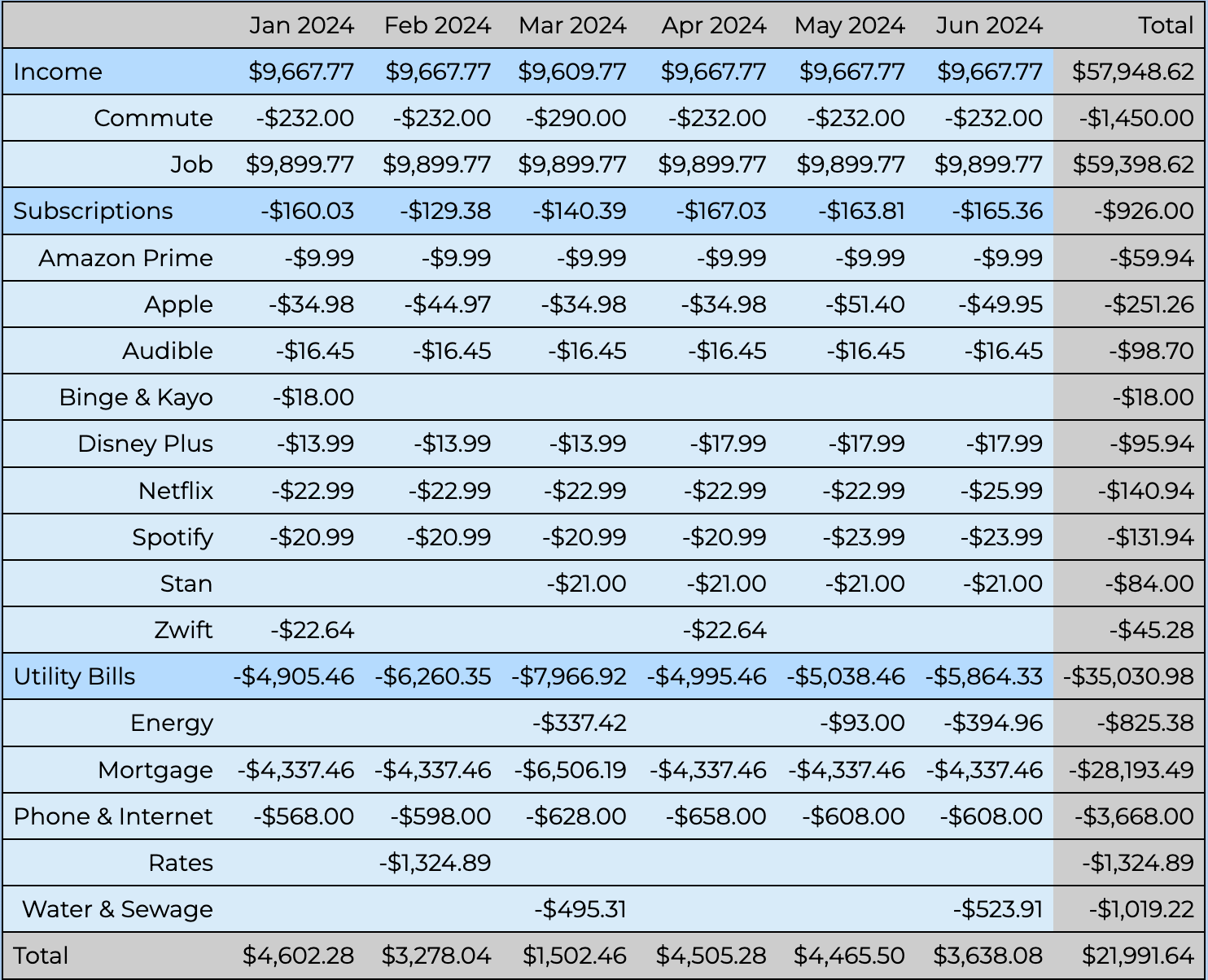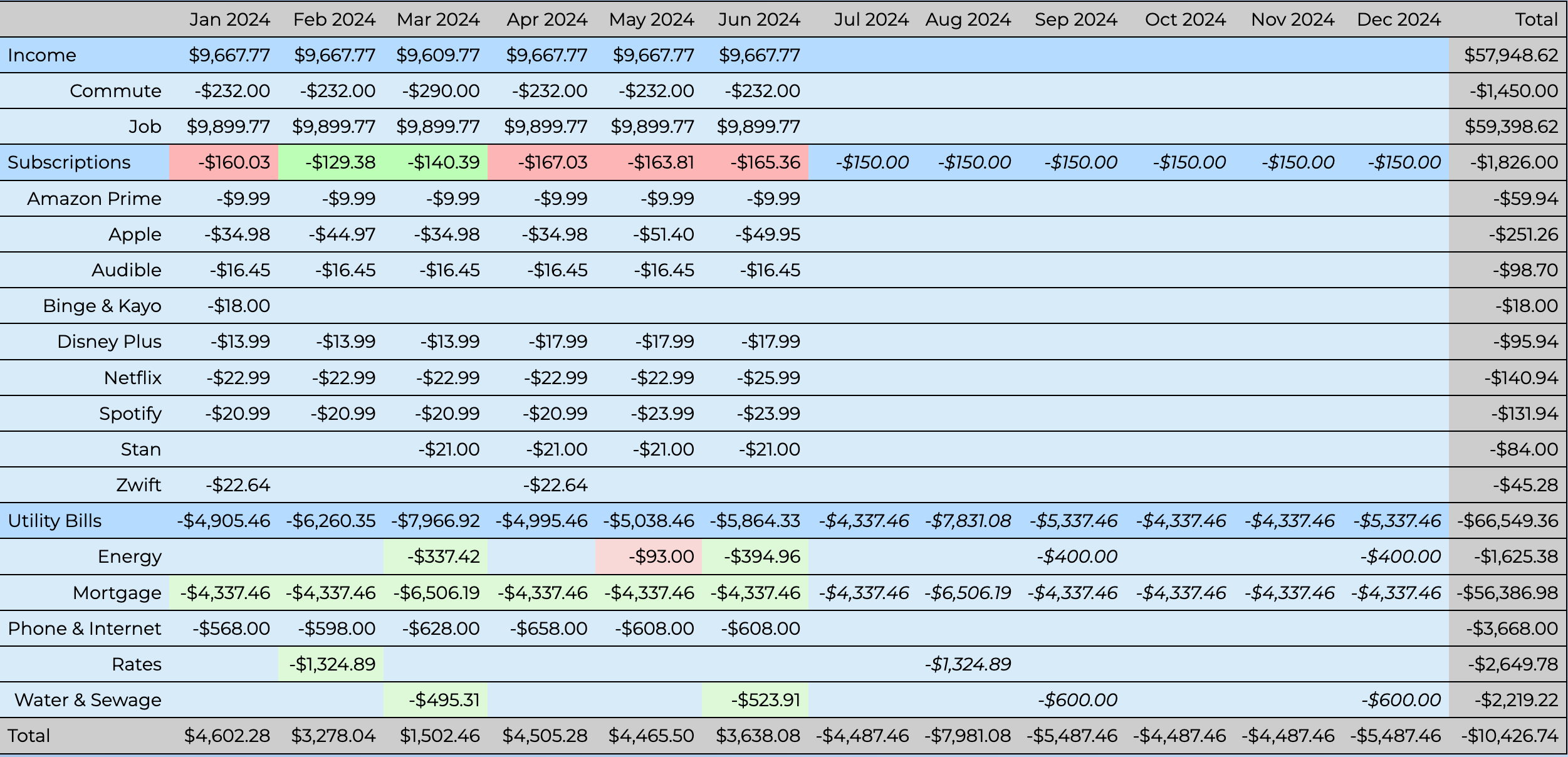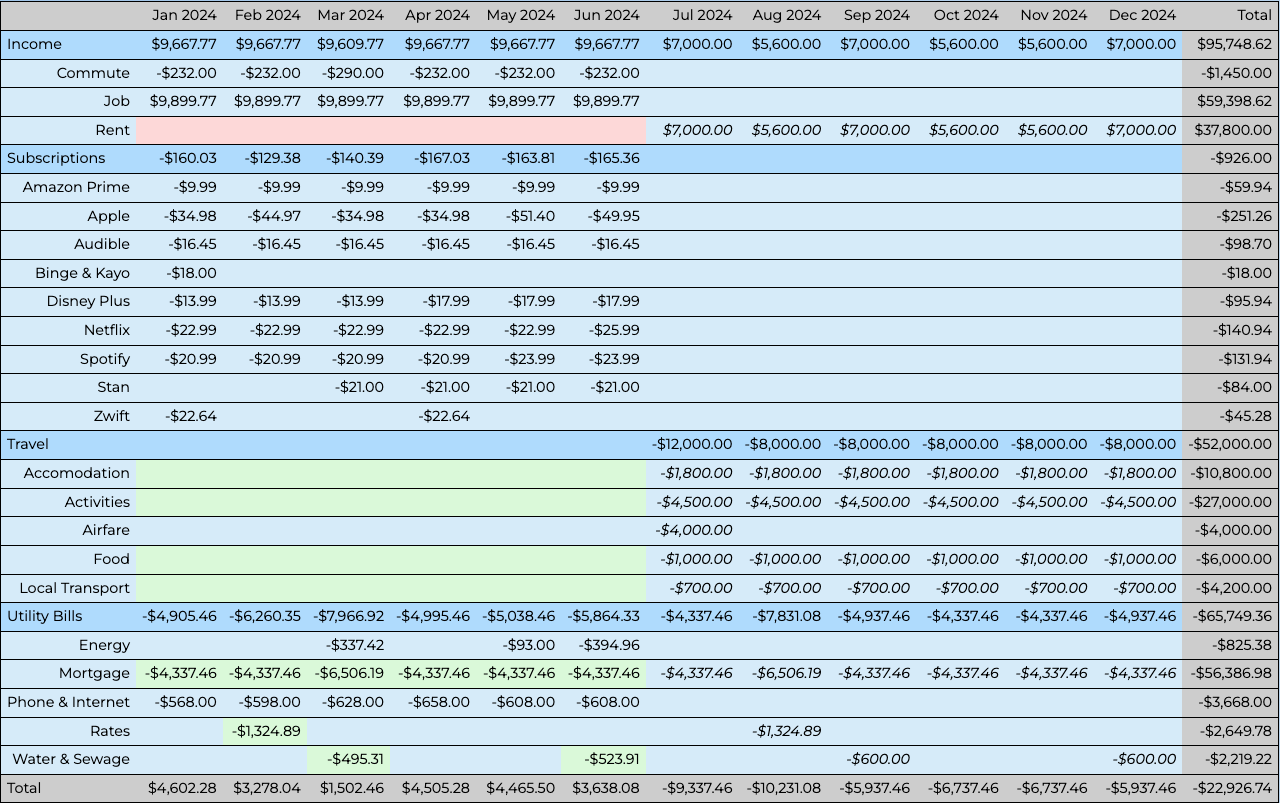
Charles Franklin Kettering (August 29, 1876 – November 25, 1958) was an American
inventor, engineer, businessman, and the holder of 186 patents. He was a founder of Delco, and was head
of research at General Motors from 1920 to 1947. Among his most widely used automotive developments were
the electrical starting motor and leaded gasoline.
He is credited with the quote “A
problem well stated is a problem half solved”.
That’s exactly our approach. Clearly laying out your income and expenses in a cash flow table
will help you identify any personal money management problems more effectively.
Two of the major concerns in personal money management are outlined below.
This website provides an Interactive Cash Flow Table which is an incredibly useful
tool that helps you to quickly determine if you are spending your money wisely and if your finances will
enable you to do the things you want to.
It can clearly state your current and future finances,
so you can make choices and have a reasonably predictable outcome.
The easiest way to see how you are spending your money and earning your income is
to generate a cash flow table from your transactions. A cash flow table is a summary of your monthly
income and expenditure by category, making it easier to see where your money goes. Looking at individual
transactions can be overwhelming, but a cash flow table highlights the key information, helping you
focus on what really matters.
Once you have your transactions (every income and expense is a
transaction) in a cash flow table it is easy to examine the table and determine if you're spending
your money wisely.
Each number in the cash flow table represents a total of the transactions for that
month/category/subcategory combination. As all transactions must be accounted for, the totals at the
bottom always remain consistent regardless of how you choose to categorise your transactions.
By
organising transactions into categories that aligns with your financial perspective, the cash flow table
becomes a valuable tool. It might take a few attempts to perfect your categories, but the process is
straightforward.
Below is an example of a cash flow table where the transactions have been
grouped into three categories, income, subscriptions, and utility bills.

It's helpful to break down each main category into subcategories for more
detailed insight. Since you'll be choosing the categories and subcategories, here's a useful
tip: make each subcategory something you could potentially change or adjust. For
example, switching electricity providers, changing your commute, or cutting back on certain expenses are
all good subcategory candidates. This approach makes your cash flow table more actionable and useful for
decision-making.

Financial planning is a crucial part of achieving both short-term stability and
long-term success. At its core, it’s about understanding where your money is coming from, where it's
going, and how you can manage it to meet your goals. Whether that’s buying a home, starting a business,
saving for retirement, or simply reducing financial stress.
A solid financial plan gives you
control over your finances instead of letting your finances control you. It helps you track income,
spending, savings, and investments, ensuring you live within your means while preparing for the future.
Planning allows you to set clear financial goals and map out realistic steps to reach them.
Financial
planning promotes better decision-making. With a clear overview of your financial situation, you can
make informed choices about spending, borrowing, and investing. This reduces impulsive or emotional
decisions and increases your chances of long-term financial security. Financial planning isn’t just for
the wealthy, it's a smart strategy for anyone who wants to build confidence, reduce stress, and
create a better future.
The core aspect of financial planning involves knowing what your in for.
How far can you cut your expenses if you really had to? If you splashed out on a new car then what would
the new repayments mean to your ability to give the boss the finger? What would happen to your finances
if something major happened in your life, you got married, moved house, ditched the job and went
travelling? How long could you sustain it for? Knowing you will be OK will reduce stress, knowing you
will not be ok will allow you to do something about it.
Cash flow forecasts are a way of
predicting the changes in your cash flow if certain events transpired. A cash flow forecast is simply a
way of predicting future cash flows (income and expenses). Our website makes putting these together
incredibly simple and then allows you to augment your cash flow tables with your cash flow forecasts so
you can see how your finances would be affected.
Using our website you can create as many cash flow forecasts as you want to .
Simply enter in the details of what you think will be your income or expenditure for those categories.
You can set a forecast at the Category or subcategory level. These cash flow forecasts can then be shown
with your cash flow table, allowing you to see the predicted behaviour of the cash flow forecast.
When a cash flow forecast is added to your cash flow table, the months for which you do not have
transactions will use the amounts from the cash flow forecast. These forecasted amounts will be in
italics so you can tell them apart.
The totals in the total column (on the right hand side) will
show the actual cash flows plus the forecasted cash flows. The total row (on the bottom) will show
either the actual cash flow total or the forecasted cash flow total.

Using our interactive cash flow table, when you add a cash flow forecast to a cash
flow table that has both forecast data and actual data then the cells will become colour coded for you
to see how you are tracking to plan. The red boxes are where the forecast is set but expenses are higher
than forecast, the green boxes are where the expenses are equal to or lower than forecast.
The
table above also shows how you can set a forecast at either the category or subcategory level.
You
can use this feature to track to a budget and check the accuracy of your forecast. Ideally it would be
green so that you are keeping within budget.
In the example above this table the cash flow
forecast is being used to track current spending. But it can also be used to track income.
The point of a cash flow forecast is to understand what will happen to your cash
flow for a particular scenario. As you will undoubtably have several options for "what will the
future look like if this happened.....", you can have as multiple cash flow forecasts. That way you
can consider how viable each of the options you have is.
The cash flow table below shows a
forecast for renting out a house and going travelling. The numbers on the bottom show how much each
month is going to cost. The cash flow table does not point out if you can afford the trip or not, it
points out how much money will be gained or lost over the year, so you can plan for it.

Disclaimer: We are not financial advisers. The information on this website is general in nature and does not take into account your individual circumstances. You should seek independent professional advice before making financial decisions.